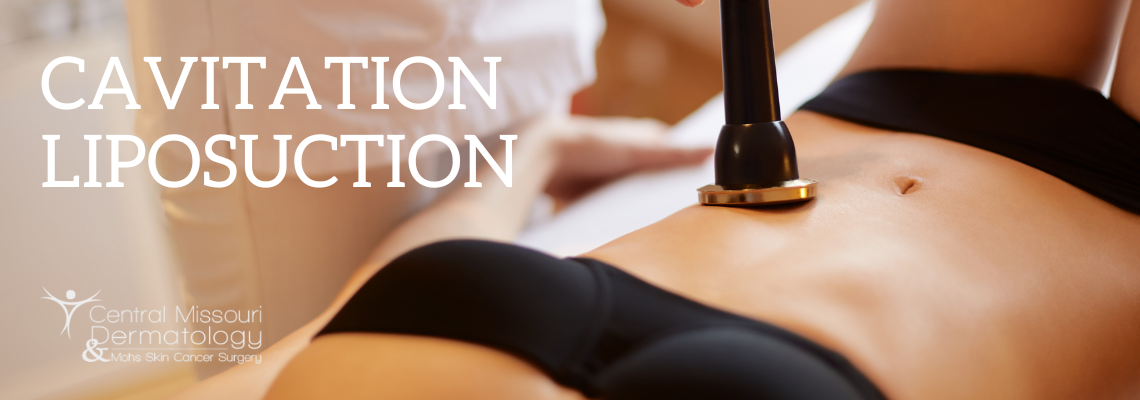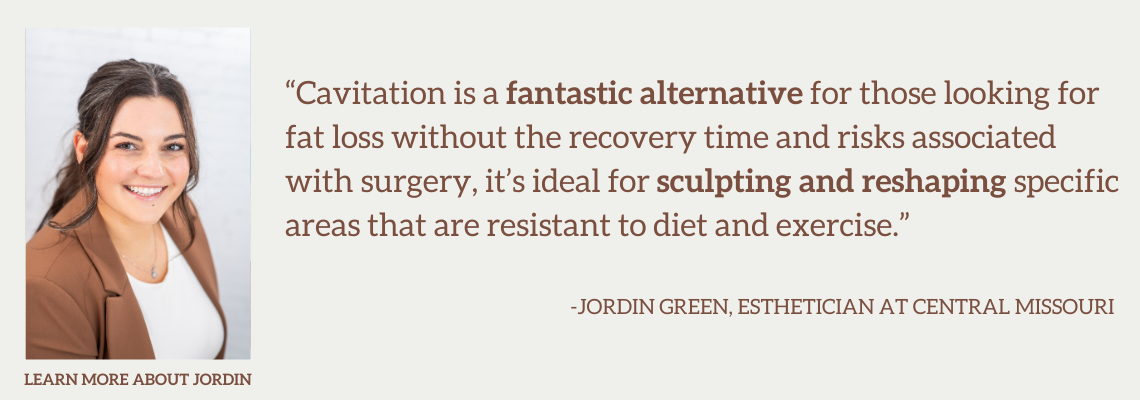
What is Cavitation Liposuction?
Cavitation Liposuction is a non-invasive treatment that uses ultrasound technology to break down fat cells in targeted areas of the body. The ultrasound waves liquefy fat cells, which are then naturally eliminated through the lymphatic system. This surgery-free approach appeals to those who want to avoid invasive procedures but still achieve body contouring and fat reduction.
Cavitation not only aids in fat and cellulite reduction but can also improve skin tightening. Unlike some weight-loss procedures that may cause loose skin, ultrasonic cavitation stimulates collagen production—the protein responsible for maintaining skin elasticity. As a result, many clients experience a tightening effect in the treated areas, leaving the skin looking firmer and more toned.
| Feature | Coolsculpting | Cavitation Liposuction |
|---|---|---|
| Technology | Cryolipolysis (controlled cooling to freeze fat cells) | Ultrasound waves to break down fat cells |
| Invasiveness | Non-invasive | Non-invasive |
| FDA Approval | Yes, FDA-cleared for multiple areas | No, FDA Approval as a specific treatment |
| Fat Reduction Method | Freezes and destroys fat cells | Liquefies fat cells, which are then flushed out |
| Target Areas | Abdomen, thighs, flanks, bra fat, chin, upper arms | Abdomen, thighs, hips, arms, back, smaller areas |
| Expected Results | Up to 25% reduction in fat layer per session | Gradual reduction over several treatments |
Benefits of Cavitation Liposuction
Cavitation Liposuction offers several advantages, including:
- Non-invasive, surgery-free fat reduction
- Targets stubborn areas like the abdomen, thighs, arms, and hips
- Helps sculpt and contour the body
- Painless with no anesthesia required
- Little to no downtime after the procedure
- Boosts lymphatic drainage and improves circulation
What to Expect During a Cavitation Liposuction Treatment
A typical Cavitation Liposuction session lasts about 30-60 minutes, depending on the treatment area. Here’s what you can expect during your visit:
- Consultation: Your esthetician will evaluate the areas you wish to treat and discuss your goals to ensure the best possible outcome. They will also explain how cavitation works and answer any questions you may have.
- Ultrasound Application: The procedure begins with the application of an ultrasound gel to the target area. The esthetician will then glide the ultrasound device over your skin, delivering sound waves to break down fat cells. “You’ll feel a warming sensation, but it’s a comfortable and relaxing process,” says Jordin Green.
- Post-Treatment Recommendations: After your session, you’ll be advised to stay hydrated and maintain a healthy diet to support the body’s natural elimination process. Drinking plenty of water is key to flushing out the liquefied fat cells.
What to Expect After Treatment
Since Cavitation Liposuction is non-invasive, there is no recovery time needed. Most clients experience a noticeable reduction in treated areas after a few sessions, with continued improvements over time.
Free Consultation
Vascular Laser Treatment FAQs
Are There Any Side Effects?
Cavitation Liposuction has minimal side effects. You may experience some redness, mild swelling, or tenderness in the treated area, but these typically subside within a few hours.
How Soon Will I See Results?
Many clients notice visible results after just one session, but for optimal results, a series of treatments is often recommended. The number of sessions will vary depending on the individual’s goals and body type.
How important is hydration before my cavitation treatment?
Hydration is crucial! Drinking at least 2 liters of water per day in the days leading up to your treatment helps your lymphatic system flush out broken-down fat cells more effectively. On the day of your session, try to drink even more water for optimal results.
Who is a good candidate for Cavitation Liposuction?
Anyone looking to reduce stubborn fat in areas like the abdomen, thighs, or arms and who prefers a non-surgical approach is a great candidate. It’s important to note that cavitation is not a weight-loss solution but a body contouring treatment.
How many sessions will I need to see results?
Results vary from person to person, but many patients see noticeable improvements after 3-6 sessions. The exact number depends on your goals and the areas being treated.
Is the procedure painful?
Cavitation Liposuction is generally pain-free. Most people describe it as a warm sensation or light vibration on the skin. There’s no need for anesthesia or recovery time.
What areas of the body can be treated?
Common treatment areas include the abdomen, thighs, arms, back, and buttocks. It can also be effective for smaller areas such as the neck or chin.
Are the results permanent?
The fat cells destroyed during ultrasonic cavitation are permanently eliminated, as they do not regenerate. However, new fat can still accumulate in treated areas if a healthy lifestyle is not maintained. To preserve the results, it’s important to follow a balanced diet and engage in regular physical activity. While cavitation can lead to significant fat and inch loss in targeted areas, the longevity of these results depends largely on the client’s post-treatment habits.
Is Cavitation Used for Weight Loss?
Ultrasonic cavitation is a fat reduction procedure, not a weight-loss solution. It’s designed to target stubborn pockets of fat and help re-sculpt your body, leading to a more toned and shaped silhouette. While some weight loss may occur, the primary result is a reduction in inches, not significant weight loss. If you’re looking for substantial weight loss, it’s best to consult with a dietitian or bariatric specialist for more appropriate options.
Is there any downtime after the procedure?
No downtime is required. You can return to your normal activities immediately after the session, making it a convenient option for people with busy schedules.
How soon can I see results?
Some patients notice changes immediately, but the best results are typically seen a few weeks after the treatment as the body naturally eliminates the broken-down fat cells.

